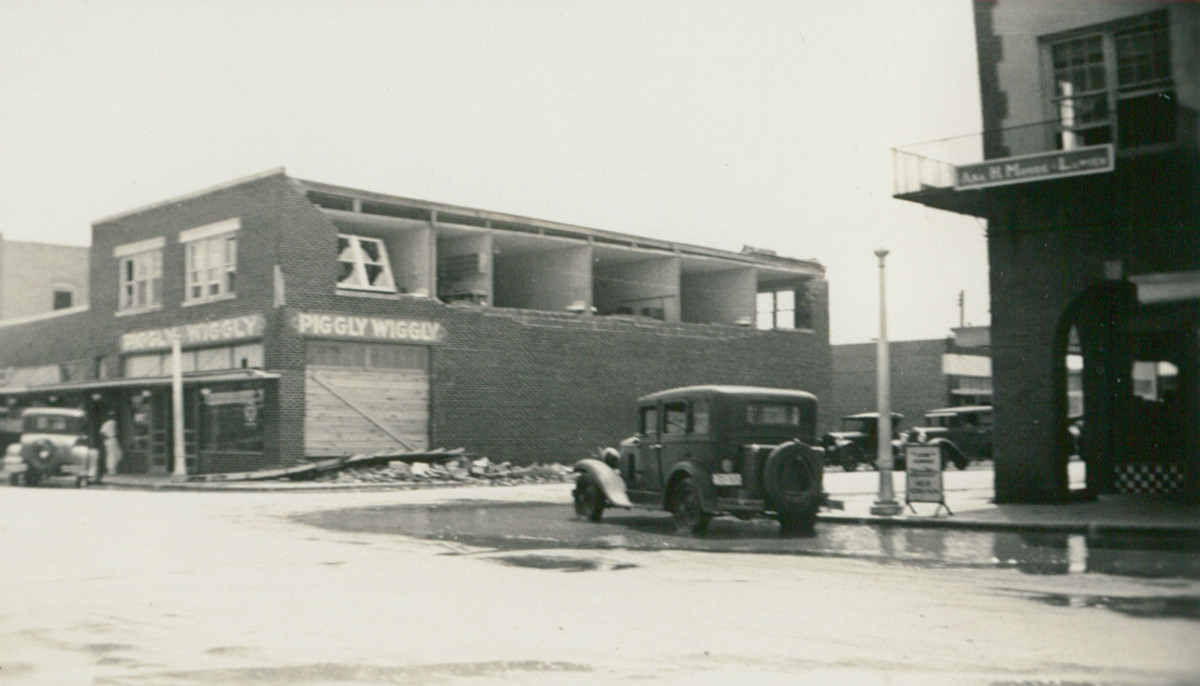The year 1933 witnessed one of the most powerful storms to ever strike the Texas Gulf Coast – the Cuba–Brownsville Hurricane. This Category 5 hurricane left an indelible mark on the Rio Grande Valley, particularly impacting communities like Harlingen. While the storm’s brute force caused widespread destruction and loss of life, the immediate aftermath saw a remarkable influx of aid, including crucial medical professionals who rushed to the ravaged areas to provide relief. This article delves into the harrowing details of the 1933 hurricane, highlighting its devastating impact on Harlingen and the invaluable role of doctors and medical personnel in the recovery efforts.
Originating in the Atlantic, the hurricane rapidly intensified, reaching Category 5 status with winds of 160 mph by September 2nd. Initially threatening Corpus Christi, Texas, the storm shifted westward, setting its sights on the lower Rio Grande Valley. The U.S. Weather Bureau issued urgent warnings, advising coastal residents to evacuate ahead of the Labor Day weekend. In anticipation of the impending disaster, martial law was declared in Corpus Christi, and mandatory evacuations were ordered.
However, the hurricane veered further west, making landfall near Brownsville, Texas, in the early hours of September 5th. While wind estimates at landfall were slightly lower at 125 mph, the storm still packed a catastrophic punch. The Rio Grande Valley bore the full brunt of its fury. The storm’s rapid dissipation after landfall did little to mitigate the extensive damage already inflicted. Citrus crops, a vital part of the region’s economy, were decimated by the high winds. The hurricane’s rampage resulted in a staggering $16.9 million in damages and tragically claimed the lives of 40 people in southern Texas.
 Damaged buildings in La Feria, Texas, after the 1933 hurricane, showcasing the corner of Main and Oleander Streets.
Damaged buildings in La Feria, Texas, after the 1933 hurricane, showcasing the corner of Main and Oleander Streets.
Eyewitness accounts from the era paint a vivid picture of the hurricane’s wrath. A report from the San Antonio Light on September 6, 1933, described the scene based on refugees and relief workers reaching San Antonio: “Refugees reaching San Antonio from the areas devestated by a tropical hurricane Wednesday and relief workers who penetrated the stricken Rio Grande Valley, gave information today of the scope of the disaster.” The report detailed millions of dollars in property damage and the destruction of countless acres of citrus crops.
Harlingen, Brownsville, and San Benito were among the hardest-hit cities. In Brownsville, nearly every building suffered damage. Harlingen and San Benito witnessed buildings leveled to the ground. Communication lines were completely severed, although repair crews were working tirelessly to restore them. Hundreds were left homeless, seeking shelter in public buildings.
The San Antonio Light reporter, upon reaching Harlingen, reported three confirmed deaths and 75 injuries. Reports from Rio Hondo indicated seven fatalities, and Brownsville also reported several deaths. The Associated Press reported a grim total of 32 deaths and 1500 injuries across the three towns. Fort Ringgold’s report for Harlingen alone listed three deaths and 35 injuries, highlighting the concentrated impact on this community.
 Damaged buildings in La Feria, Texas, after the 1933 hurricane, showcasing the corner of Main and Oleander Streets.
Damaged buildings in La Feria, Texas, after the 1933 hurricane, showcasing the corner of Main and Oleander Streets.
In response to the catastrophe, relief efforts were swiftly mobilized. Two relief trains from San Antonio, carrying essential supplies such as food, clothing, drinking water, and medical equipment, reached Harlingen after an overnight journey through the devastated region. Crucially, these trains also carried doctors, nurses, and public health workers – the forerunners of what we might today consider “Hpa Harlingen Doctors” in their commitment to community health, albeit in a historical context of emergency response. These medical professionals played a critical role in providing immediate care to the injured and addressing public health concerns in the aftermath of the storm. Texas Rangers and highway patrolmen were also deployed to maintain order in the stricken areas.
Despite the widespread devastation, Governor Ferguson deemed martial law unnecessary, indicating a degree of control amidst the chaos. An army aviator who conducted an aerial survey over the Rio Grande Valley reported “tremendous” losses, further emphasizing the scale of the disaster.
The Galveston Daily News on September 7, 1933, published the official Red Cross list of casualties, offering a somber roll call of the dead and injured. This list included names from Harlingen, Rio Hondo, Los Fresnos, San Benito, and even Matamoros, Mexico, underscoring the storm’s far-reaching impact. Among the injured treated at the emergency hospital in Harlingen were individuals with surnames suggesting the diverse community fabric of the region at the time. Seventy-five doctors from San Antonio and 100 nurses were reported to be working tirelessly to care for the injured in Harlingen, demonstrating a significant medical surge to support the local healthcare infrastructure overwhelmed by the disaster.
 Widespread damage from the 1933 Cuba-Brownsville Hurricane in Southern Texas, resulting in significant economic and human loss.
Widespread damage from the 1933 Cuba-Brownsville Hurricane in Southern Texas, resulting in significant economic and human loss.
The relief efforts were not limited to Harlingen alone. McAllen, while located further inland, also felt the storm’s impact. A report from McAllen on September 6th described the beginning of the arduous task of rebuilding. Damage estimates across the Valley remained staggering, with authentic reports suggesting total losses reaching at least $15,000,000. While fatalities outside the major cities were less common, towns like Mercedes, Weslaco, Donna, and others in the “upper” valley also suffered significant damage to infrastructure and crops.
The citrus crop, nearing harvest time, was particularly hard hit. Conservative estimates suggested that only a quarter of the $6,000,000 crop would be salvageable. East of Mercedes, almost all fruit was destroyed, while areas further west still faced substantial losses.
Mayor John Ewing of McAllen received a telegram from Governor Miriam Ferguson assuring him of incoming relief supplies, including food, water, army surgeons, and equipment, and the availability of relief funds. This coordinated response highlighted the state’s commitment to aiding the ravaged region.
 Ruined barn of Herman Diehl Wessel in La Feria after the 1933 hurricane, depicting the destructive power of the storm on rural structures.
Ruined barn of Herman Diehl Wessel in La Feria after the 1933 hurricane, depicting the destructive power of the storm on rural structures.
Harlingen, despite initial reports of complete destruction, proved more resilient in its larger buildings. However, approximately 40% of homes were deemed uninhabitable, particularly those of less robust construction. Businesses also suffered immense losses, with department stores experiencing damage estimated at $100,000, compounded by floodwaters reaching four feet in the business district. The agricultural heart of the region was broken, with miles of citrus groves devastated and crops ruined.
The 1933 Cuba–Brownsville Hurricane stands as a stark reminder of the power of nature and the vulnerability of coastal communities. The disaster brought immense suffering and destruction to the Rio Grande Valley, including Harlingen. However, it also showcased the resilience of the human spirit and the importance of community support in times of crisis. The rapid response of relief trains carrying essential supplies and medical personnel, including doctors who traveled from afar to provide aid in Harlingen, exemplifies the dedication to helping those in need. While “hpa harlingen doctors” as a specific entity may not have existed in 1933, the spirit of medical professionals rushing to Harlingen to provide care in the face of disaster echoes the commitment to community health that defines healthcare providers in Harlingen today. The legacy of the 1933 hurricane serves as a testament to both the destructive force of nature and the enduring strength of human compassion and collaboration in recovery.

